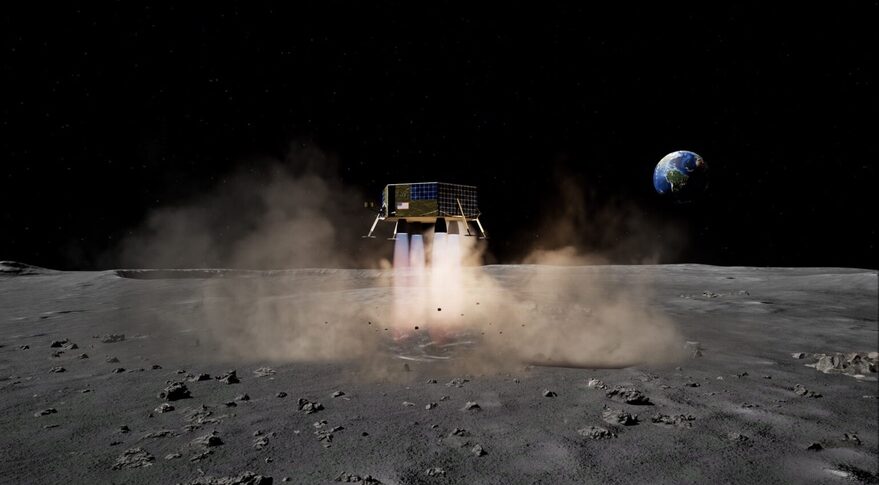
Astrobotic bids for Masten Space Systems assets (Image Credit: Space News)
WASHINGTON — Astrobotic Technology, a lunar lander developer, has made a formal bid for “substantially all” of the assets of Masten Space Systems, another lander company that filed for Chapter 11 bankruptcy last month.
In a filing with the U.S. Bankruptcy Court for Delaware Aug. 14, Masten said it received a “stalking horse” bid of $4.2 million for Masten’s assets, including a SpaceX launch credit worth $14 million, from Astrobotic. The agreement, in effect, sets a minimum price for the sale of those assets but does not prevent Masten from seeking higher bids through an auction process that runs through early September.
The agreement appears to supersede an earlier agreement between Masten and a third lunar lander company, Intuitive Machines, included in Masten’s Chapter 11 filing July 28. That agreement covered the SpaceX launch credits alone and Masten did not disclose the value of it in its original filing.
Masten said in the filing that it was not until Aug. 3, after the original filing, that it was “seriously engaged in conversations with Astrobotic” that led to the agreement. By Aug. 10, Astrobotic agreed to make the stalking horse bid for “substantially all” of Masten’s assets. The agreement also includes up to $1.4 million in debtor-in-possession financing that can serve as a credit towards the asset purchase.
The filing didn’t indicate what assets, if any, might be excluded from the agreement. In addition to its work on the XL-1 lunar lander, Masten also operated vertical-takeoff, vertical-landing (VTVL) suborbital vehicles for technology demonstration. Astrobotic, through a spokesperson, declined to comment Aug. 15 on the filing.
Potentially the most valuable asset is the SpaceX launch credit. SpaceX terminated an existing launch contract with Masten June 30 because of missed payments but agreed to provide an assignable credit for the amount paid to date. However, the filing states that SpaceX requires the credit go to “certain parties within the CLPS vendor pool,” a reference to NASA’s Commercial Lunar Payload Services program. That is, the filing notes, “a very small pool of potential assignees.”
There are 14 companies eligible to compete for CLPS task orders, with five of them — Astrobotic, Draper, Firefly Aerospace, Intuitive Machines and Masten — having active task orders. All but Draper plan to launch at least some of their CLPS missions on SpaceX vehicles. Draper, which won its CLPS award for a lunar farside landing mission July 21, has not announced its plans for launching the mission.
Masten financial woes
The filing also outlines in greater detail the series of events that led Masten to file for Chapter 11 bankruptcy in July. The company had, over the years, demonstrated its technical capabilities with its VTVL vehicles, but “from a business perspective, the company was less successful financially,” the filing notes.
The company, with less than 25 employees for much of its history, had to scale up when it won its CLPS award in April 2020. That created “financial pressures from which the company could not recover,” the filing states, further complicated by the pandemic.
In late 2021, the company tried to raise $60 million but failed to find much interest, which it blamed on being late to the market. “When the Debtor entered the market late in the year, many investors interested in making substantial investments in space companies had already done so.”
In March 2022, a space company identified in the filing only as Company A approached Masten about a potential acquisition. That led to a letter of intent at the end of that month on an acquisition, but by late April Company A backed out, citing “substantial liabilities recognized to date and additional future projected losses” from the CLPS mission.
A second space company, Company B, approached Masten in May about a potential acquisition or purchase of Masten’s assets through a bankruptcy proceeding known as a Section 363 sale. That company, though, concluded it could not close the deal on the short timeline Masten required. There were also discussions with a Company C, described as another CLPS company, about selling Masten’s CLPS award, but that did not go forward because of uncertainty of NASA approving the transfer.
By late July, when Masten filed for Chapter 11 bankruptcy, the company was down to $22,000 in cash and had furloughed all but six of its employees.
Uncertain future
Masten’s bankruptcy filing and potential sale of its assets raise doubts about the future of both its lunar lander program for CLPS and the VTVL flights, which NASA uses through its Flight Opportunities program.
NASA CLPS officials said shortly after the Chapter 11 filing that, if Masten was unable to carry out its CLPS task order, they would consider either reassigning the payloads intended to fly on that lander on other missions, or compete a new task order. They added, though, they had not made any decisions yet because they had not been formally notified by Masten that it will be unable to fulfill its task order.
The same is true for Masten’s work with the Flight Opportunities program. “We still have task orders with them,” said John Kelly, NASA Flight Opportunities program manager, during a NASA town hall meeting Aug. 8 at the Small Satellite Conference in Logan, Utah. “We will wait and see what happens.”
Jim Reuter, NASA associate administrator for space technology, said at an Aug. 3 meeting of the NASA Advisory Council’s technology committee that there is an “unsustainable” number of companies in the CLPS program. “There’s going to be some sorting out.”
He said at the time that he believed that Masten would try to retain its VTVL vehicles in any bankruptcy reorganization. “We do a fair amount with them on that, so that’s where it would really affect us without them,” he said. “But that’s in work.”








